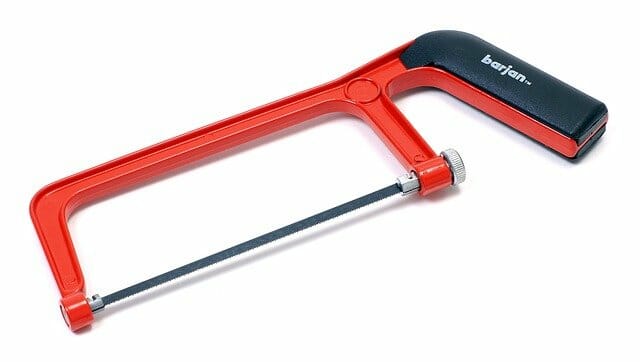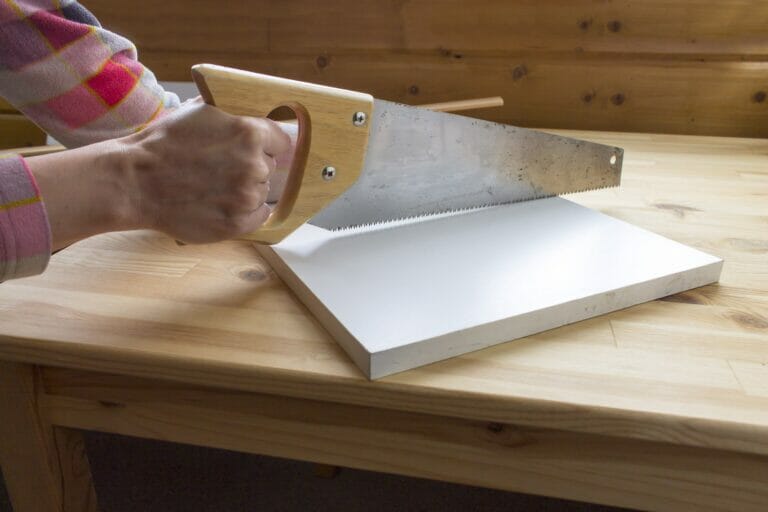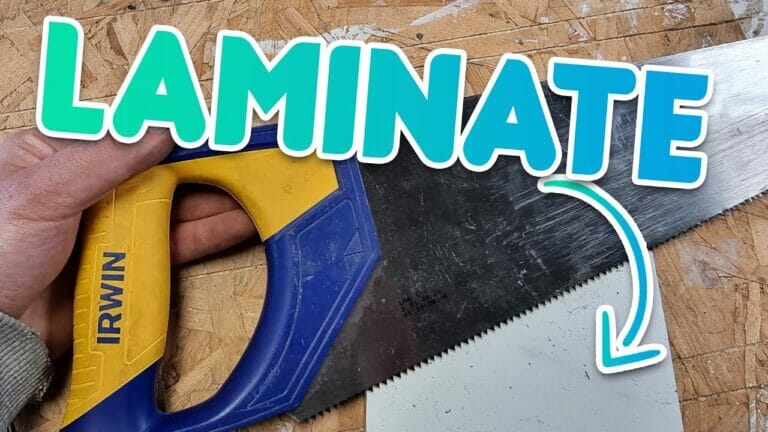
Hand Saw vs. Jigsaw: When it comes to cutting wood or other materials, you’ve got options! ????
If you’re wondering which tool to use, you’re in the right place. In this article, we’ll compare two popular cutting tools: the trusty Hand Saw and the versatile Jigsaw.
But before we dive in, let’s clarify what these tools are and how they can make your DIY projects a breeze. Get ready to unleash your inner carpenter!
When it comes to cutting and woodworking, hand saws and jigsaws both have their strengths. Let’s compare some key features to help you decide which tool suits your needs. Hand saws offer precision and control, perfect for intricate cuts, while jigsaws excel at curved and intricate shapes. Jigsaws also have adjustable speed settings, making them versatile for various materials. Additionally, hand saws are portable and require no electricity, while jigsaws offer faster cutting with the power of a motor. Choose the tool that aligns with your woodworking goals!

Key Takeaways: Hand Saw vs. Jigsaw
1. Hand saws are manual tools that require physical effort to cut through materials, while jigsaws are power tools that use a reciprocating blade for quick and efficient cutting.
2. Hand saws are versatile and can be used for various types of cuts, while jigsaws are more suitable for curved or intricate cuts.
3. Hand saws offer more control and precision, making them ideal for detailed woodworking projects, whereas jigsaws prioritize speed and efficiency.
4. Hand saws are portable and do not require electricity, making them convenient for outdoor or remote projects, while jigsaws require a power source.
5. Hand saws are generally more affordable and beginner-friendly, while jigsaws require some skill and experience to use effectively.
Comparing Hand Saw vs. Jigsaw
Hand saws and jigsaws are both essential tools for cutting wood, but they have distinct differences. In this article, we will compare the features, user experience, and pros and cons of hand saws and jigsaws to help you determine which tool is better suited for your woodworking needs. Whether you’re a DIY enthusiast or a professional carpenter, understanding the differences between these two tools will help you make an informed decision.
Overview of Hand Saw
A hand saw is a traditional cutting tool that has been used for centuries. It consists of a long, thin blade with sharp teeth and a handle for gripping. Hand saws are designed to cut wood manually, using the user’s physical effort. They come in different types, such as crosscut saws, rip saws, and dovetail saws, each with its specific purpose and tooth configuration.
Hand saws offer excellent control and precision, making them ideal for intricate woodworking tasks like joinery and fine woodworking. They are versatile tools that can be used for various cuts, including crosscuts, rip cuts, and miter cuts. Hand saws are lightweight, portable, and do not require any power source, making them suitable for both indoor and outdoor use.
Overview of Jigsaw
A jigsaw, on the other hand, is a power tool that uses a reciprocating blade to cut through materials. It is equipped with a motor that moves the blade up and down rapidly, allowing for quick and efficient cutting. Jigsaws are commonly used for cutting curves, circles, and intricate shapes in wood, metal, and other materials.
Jigsaws offer versatility and maneuverability, as they can make curved cuts that are difficult to achieve with a hand saw. They come with different blade types, such as fine-tooth blades for smooth cuts and coarse-tooth blades for faster cuts. Jigsaws also have adjustable speed settings, which allow users to control the cutting speed based on the material and desired finish.
Key Features Compared
When comparing hand saws and jigsaws, several key features come into play. Let’s take a look at how these two tools stack up against each other in terms of their features and capabilities.
Cutting Capacity
Hand Saw: Hand saws have a limited cutting capacity, especially when it comes to making curved cuts. They are primarily designed for straight cuts and are not suitable for intricate shapes or curves.
Jigsaw: Jigsaws have a much greater cutting capacity, thanks to their ability to make curved cuts. They can easily navigate through tight corners and cut intricate shapes with ease.
Cutting Speed
Hand Saw: Hand saws require manual effort, which can make them slower compared to power tools like jigsaws. However, with a skilled user, hand saws can achieve a decent cutting speed.
Jigsaw: Jigsaws are powered tools that offer fast cutting speeds. The reciprocating blade moves rapidly, allowing for quick and efficient cuts through various materials.
Versatility
Hand Saw: Hand saws are versatile tools that can be used for various cutting tasks, including crosscuts, rip cuts, and miter cuts. However, they are limited when it comes to making curved or intricate cuts.
Jigsaw: Jigsaws are incredibly versatile tools that excel in making curved cuts and intricate shapes. They can also be used for straight cuts, making them suitable for a wide range of woodworking projects.
Precision
Hand Saw: Hand saws offer excellent precision, especially for straight cuts. With proper technique and practice, a skilled user can achieve clean and accurate cuts.
Jigsaw: Jigsaws provide decent precision, but they may not offer the same level of accuracy as hand saws for straight cuts. However, they excel in making curved cuts and intricate shapes with precision.
User Experience
The user experience of using a hand saw or a jigsaw can vary depending on the individual and the specific task at hand. Here are some aspects to consider when evaluating the user experience of these two tools:
Hand Saw Experience
Using a hand saw requires physical effort, as the user must power the cutting action. This can be tiring, especially for extended cutting sessions. However, using a hand saw provides a sense of craftsmanship and control, allowing the user to feel connected to the woodwork. Hand saws are relatively quiet compared to power tools, which can be advantageous in certain situations.
Jigsaw Experience
Using a jigsaw offers a different experience, as it is a power tool that requires less physical effort. The motorized cutting action makes cutting through materials effortless and efficient. However, the noise produced by the motor and blade can be loud, and the vibrations can be felt in the hands during operation. Jigsaws also require a power source, limiting their portability compared to hand saws.
Pros and Cons
Hand Saw Pros:
– Offers excellent control and precision.
– Lightweight and portable.
– No power source required.
– Ideal for intricate woodworking tasks.
Hand Saw Cons:
– Limited cutting capacity for curved or intricate cuts.
– Requires physical effort.
– Slower cutting speed compared to power tools.
Jigsaw Pros:
– Excellent for making curved cuts and intricate shapes.
– Faster cutting speed.
– Adjustable speed settings for different materials.
– Versatile for a wide range of cutting tasks.
Jigsaw Cons:
– Vibrations and noise during operation.
– Requires a power source.
– Less precision for straight cuts compared to hand saws.
Price Comparison
When it comes to price, hand saws are generally more affordable compared to jigsaws. Hand saws can range from $10 to $50, depending on the type and quality. Jigsaws, on the other hand, can range from $50 to $300 or more, depending on the brand, features, and power.
It’s important to consider your budget and the specific woodworking tasks you need to accomplish when deciding between a hand saw and a jigsaw. If you primarily work with straight cuts and require precision, a hand saw may be a more cost-effective option. If you frequently work with curved cuts and intricate shapes, a jigsaw will provide more versatility and efficiency.
To help you visualize the comparison between hand saws and jigsaws, here is a table comparing their key features:
| Feature | Hand Saw | Jigsaw |
|---|---|---|
| Cutting Capacity | Limited to straight cuts | Excellent for curved cuts and intricate shapes |
| Cutting Speed | Requires manual effort, slower compared to power tools | Rapid cutting speed |
| Versatility | Can perform various cuts, but limited for curved or intricate cuts | Highly versatile, excels in making curved cuts and intricate shapes |
| Precision | Excellent precision for straight cuts | Decent precision, especially for curved cuts and intricate shapes |
Which is better – Hand Saw vs. Jigsaw?
After comparing the features, user experience, and pros and cons of hand saws and jigsaws, it ultimately comes down to your specific woodworking needs and preferences.
If you prioritize precision, control, and traditional craftsmanship in your woodworking projects, a hand saw may be the better choice for you. Hand saws excel in straight cuts and offer excellent control, making them ideal for joinery, fine woodworking, and other intricate tasks.
On the other hand, if you frequently work with curved cuts, circles, and intricate shapes, or if you value speed and versatility, a jigsaw is the tool to consider. Jigsaws provide quick and efficient cutting, especially for curved cuts, and offer versatility for various woodworking projects.
In summary, the decision between a hand saw and a jigsaw depends on your specific needs, preferences, and the type of cutting tasks you frequently undertake. Consider the pros and cons, as well as your budget, to make the right choice that will enhance your woodworking experience and help you achieve the best results in your projects.
Frequently Asked Questions
Welcome to our Frequently Asked Questions section where we’ll compare hand saws and jigsaws. Find answers to common questions about these two types of saws, their features, and their best uses.
1. What are the main differences between a hand saw and a jigsaw?
A hand saw is a manual cutting tool consisting of a handle and a blade with sharp teeth. It requires physical effort to operate, making it suitable for small projects and precise cuts. On the other hand, a jigsaw is a power tool with a reciprocating blade that moves up and down rapidly. With its motorized action, a jigsaw can make curved and intricate cuts more easily than a hand saw.
So, while a hand saw is great for simple cuts and projects where precision is crucial, a jigsaw offers versatility in cutting shapes and curves efficiently.
2. Which saw is better for cutting straight lines?
If you need to cut straight lines, a hand saw is the better option. Its design allows for more control and accuracy when making linear cuts. With a good grip and steady hand, you can make clean, straight cuts with a hand saw. Jigsaws, while capable of cutting straight lines, are better suited for curved and irregular cuts due to their reciprocating blade.
However, it’s important to note that there are specialized blades available for jigsaws that can improve their performance in making straight cuts. So, if you’re planning to primarily cut straight lines, a hand saw is the safer choice, but a jigsaw with the right blade can do the job too.
3. Can a jigsaw replace a hand saw?
While a jigsaw can perform many of the tasks a hand saw can, it can’t fully replace it. Hand saws excel in their simplicity and precision for certain cuts, especially when working with delicate materials or making small, controlled cuts. Additionally, hand saws are portable and require no power source, making them versatile tools in various settings.
On the other hand, jigsaws provide more versatility with their ability to make curved cuts and handle different materials. They are also great for larger projects that require speed and efficiency. So, while a jigsaw can be a valuable addition to your tool collection, a hand saw still has its place for specific tasks.
4. Which saw is better for woodworking?
For woodworking projects, a jigsaw is often a better choice due to its ability to handle various materials, cut curves, and make intricate designs. It allows you to create more detailed and decorative finishes. However, there are instances where a hand saw shines, such as when making precise joints or small cuts where control and accuracy are essential.
Ultimately, the choice between a hand saw and a jigsaw for woodworking depends on the specific task at hand. It may be beneficial to have both in your toolbox to cover a wider range of woodworking needs.
5. Are jigsaws safe to use?
Jigsaws can be safe to use if proper safety precautions are followed. Always wear safety goggles to protect your eyes from flying debris during the cutting process. Additionally, make sure to secure the workpiece properly to prevent it from slipping or moving during the cut.
When handling a jigsaw, it’s important to keep your fingers away from the blade and follow the manufacturer’s instructions for safe operation. Consider using clamps or guides to ensure stability and control while cutting. With proper safety measures and responsible usage, jigsaws can be a safe and effective tool in your workshop.
Summary
So, here’s a summary of what we’ve learned about hand saws and jigsaws.
Hand saws are great for simple, straight cuts. They’re easy to use and don’t require any electricity. Plus, they’re pretty affordable. Jigsaws, on the other hand, are perfect for cutting curves and shapes. They can also cut through different materials like wood, metal, and plastic. But they need electricity and can be a bit more expensive.
In the end, it’s all about what you need. If you want something basic and budget-friendly, go for a hand saw. But if you need to cut things in different shapes or materials, a jigsaw might be better. Remember to always wear safety goggles and ask an adult for help when using power tools. Happy cutting!




